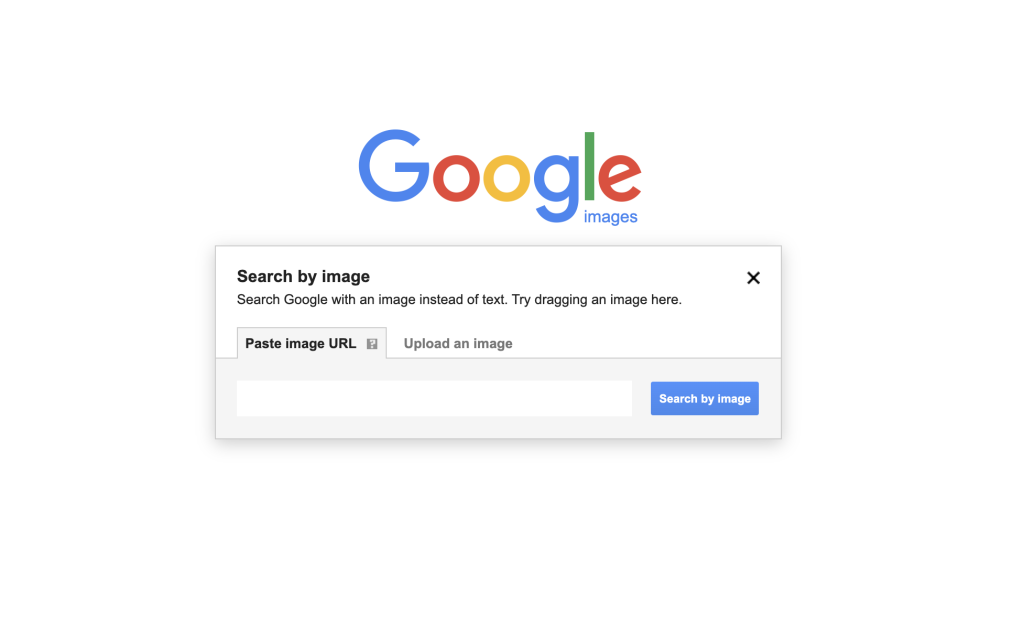If you thought digital PR is just another buzzword and haven’t given it a chance, you might be seriously missing out. Although its lines are blurred between digital marketing, social media, and SEO, digital PR is undoubtedly one of the most impactful strategies your business can benefit from.
In this blog, we’ll discuss everything you need to know about digital public relations, the PR of the new age.
Let’s start!
What is Digital PR?
Digital PR refers to the strategically planned activity of using Internet-based methods, tools, and channels to achieve a greater online presence and visibility.
The addition of digital stands for the evolution of PR practices.
The fact is that, nowadays, the majority of people discover or come into contact with brands in the online landscape. Some of the potential touchpoints include the likes of Google searches, social media platforms, podcasts, forums, blogs, and review sites.
So, to gain publicity, PR professionals can no longer rely just on traditional media to convey their messages effectively. Rather, they put their efforts into ensuring a brand is present and presented positively on digital channels its target audience uses.
In order to accomplish the desired visibility and image, PR practitioners turn to four cornerstones of digital public relations:
- Search engine optimization (SEO)
- Content marketing
- Social media
- Influencer marketing.
By implementing them, brands can reach and impact much broader audiences than by using offline methods that simply don’t cut it anymore.
Digital PR vs. traditional PR
To truly understand the ins and outs of digital public relations, it’s necessary to take a look at how it differs from traditional PR.
Achieving and maintaining a positive brand image is what both still have in common. However, traditional and digital PR differentiate in the approach and tactics used to achieve that objective.
Prior to the appearance of the Internet, PR professionals were mainly focused on gaining publicity through traditional media. Print-based publications, radio, and television were the main sources of information. So, naturally, the main goal was to get a client in newspapers, magazines and shows relevant to their target audience.

How digital overtook the traditional
But, technologies evolved and made way for new communications channels and information sources. As a result, a shift to digital media inevitably happened.
Audiences began to welcome the advantages of these new outlets, such as:
- Direct and two-way communication that is not limited by time and location,
- Ability to connect with others and form online communities based on common topics, interests, or issues,
- Option to choose which media, how, and when to consume,
- Opportunity to become the source of information and provide feedback,
- The infinitely wide array of information, knowledge, and learning resources.
The list could go on and on – hence why digital overtook traditional media.
Even the likes of The Independent, one of the UK’s biggest national newspapers, decided to abandon print and embrace a global, digital-only future back in 2016.
Down the line, what was once primarily a media coverage and press relations based profession had to become agile and adaptive to ensure a brand’s message is heard in the ever-changing and often crowded digital landscape.
Digital public relations tackled this challenge by using the digital environment to their advantage.
Some of the tactics used nowadays still include networking with journalists, sending out press releases, and generating buzz. But, all of these have gained a new, digital dimension.
In addition, collaborating with influencers and bloggers, gaining backlinks, and encouraging social media mentions via social listening, has become infallible.
Read How PR Professionals Can Use Media Monitoring And Stay Ahead of the Game
The 9 Benefits of Digital PR
Now that you know what Digital PR is, let’s see how exactly can you use it to your advantage.

#1 Spread news and information faster and more effectively
Owned media such as your business’ website, blog, and social media means you don’t have to rely on whether a journalist will publish your story in order to share valuable information. Having a strategy in place means you can also ensure that your online communication has a clear goal, is effective, and is targeted to the right audience.
#2 Create strong, long-term relationships with the target audience
Building a relationship with your public is imperative for building trust. According to OnBrand, building an audience is more valuable than direct sales for over 70% of brand managers. And what better way to do so, than by continuously providing great reasons for your customers to connect with you and keep track of your brand’s activities?
#3 Build online authority
Consistency and quality are key. By constantly producing relevant, high-quality content and being featured in articles, media, and other outlets, the public will start to perceive you as an expert in your niche. Once you build such an image and establish trust and credibility, all aspects of your business can only thrive from it.
#4 Increase brand awareness
Brand awareness is extremely important. It is the driving force of perceptions and attitudes, consumer-based decision-making, and even repeated purchases. Consumers love to buy from brands they are familiar with, and digital PR enables you to connect with them on channels they already use too. As a result, you will not only build relationships but also instill brand loyalty.
#5 Positively impact brand reputation
On the note of brand image, managing your online reputation can make your brand become a lead magnet. As consumers, all of us tend to do a bit of research before engaging in a buying process. If you were constantly exposed to a brand and its content, and then on top of that seen a number of positive reviews, you’d probably be inclined to actually purchase something.
#6 Generate meaningful engagement
The number of likes, comments, or shares can be a great ego-boost. But it’s also much more than just a vanity metric. With the right strategy, you can encourage higher engagement and therefore discover valuable insights that can easily translate into guidelines for strategy optimization and even product or service improvement.
#7 Identify and use user-generated content to increase trust
Social media makes it very easy for regular people to produce user-generated content. It just might be the most effective (and affordable) way to reach your target audience. This type of content featuring a brand is considered to be authentic and genuine. By keeping track of your brand, you can identify relevant UGC and use it to your advantage.
#8 Improve SEO and boost website traffic
When done well, digital PR will positively impact the website’s ranking on Google. From then on, it’s like a snowball effect. The better you are ranked, the more people will notice and mention your brand. More publicity means new audiences will come by your brand and visit your website. More website traffic will likely result in new leads. You get the gist, right?
#9 Directly affect sales and revenue
Finally, if you implemented all of the advice and experienced at least some of these benefits (if not all), your sales team might be highly appreciative of your digital PR efforts. By increasing website traffic, being omnipresent online, and sparking interest in your products or services with valuable and trustworthy content, you can bet the process will ultimately lead to more sales.
Most Common Digital PR Strategies
A Digital PR strategy encompasses the most important tactics that have the potential to drive defined business goals.
Sometimes, it also includes backlink analysis and an SEO audit.
Here are the 10 most common Digital PR strategies:
- Sharing newsworthy press releases to ensure publicity and press features
- Gaining high-quality backlinks from websites, online publications, and reviews
- Finding unlinked mentions of your company
- Adding the company website to directories, top 10 lists, etc.
- Networking with journalists, editors, influencers, and bloggers
- Creating relevant content to build trust and authority
- Cross-promoting content across owned media (website, blog, social media)
- Writing and publishing guest blogs for added exposure
- Securing opportunities for interviews and sharing expert opinion
- Enabling affiliate and referral programs.
Become a part of the Digital PR community on Quora!
Join our Digital Public Relations Quora Space to share, discuss, and learn more about Digital PR and connect with 4000+ Digital PR enthusiasts.
Defining Digital PR Goals
As we previously mentioned, digital PR aims to build a strong brand and increase its exposure using digital tools. To achieve this, it’s essential to clearly define goals that are in line with the overall brand strategy and contribute to its growth.
The goals will differ from brand to brand. Emerging brands will strive for brand awareness, while established brands might want to boost lead generation through brand reputation management.

It’s always important to keep track of emerging trends and opportunities for promotion, as well as your industry and competitors. You want to be aware of any changes that might affect your own business, so you can be proactive and prevent a potential crisis.
In the bottom line, every digital PR professional should make an effort to create synergy between a business or an organization and its publics. Gaining a deeper understanding of your target audience and establishing trust will encourage positive online buzz and brand mentions, as well as website traffic.
Measuring Digital PR: Tools and Metrics
The purpose of digital PR tools and metrics is to measure and track the effectiveness of PR efforts. Measuring their correlation with the brand’s website ranking, traffic, and sales conversion is another important aspect.
Digital PR metrics
With that in mind, here are the most important digital PR metrics to track:
- Referral traffic from outreach
- Number of backlinks and do-follow links
- Domain authority or domain rating of links
- Social media engagement
- Number of mentions and impressions (but beware of these 3 common mistakes)
- Changes in brand sentiment analysis
- Number of placements and rejections
- Correlation between campaign launch and increase in:
- Direct traffic
- Organic growth
- Sales (click-through rate and conversion rates)
- Social engagement
- Brand awareness and outreach (impressions from Google Search Console)
Having an overview of these metrics will provide you with the full picture. Moreover, it will allow for the most effective strategy optimization.
Digital PR tools
Now, to measure all the abovementioned metrics, you’ll need certain digital PR tools. We recommend:
Respona
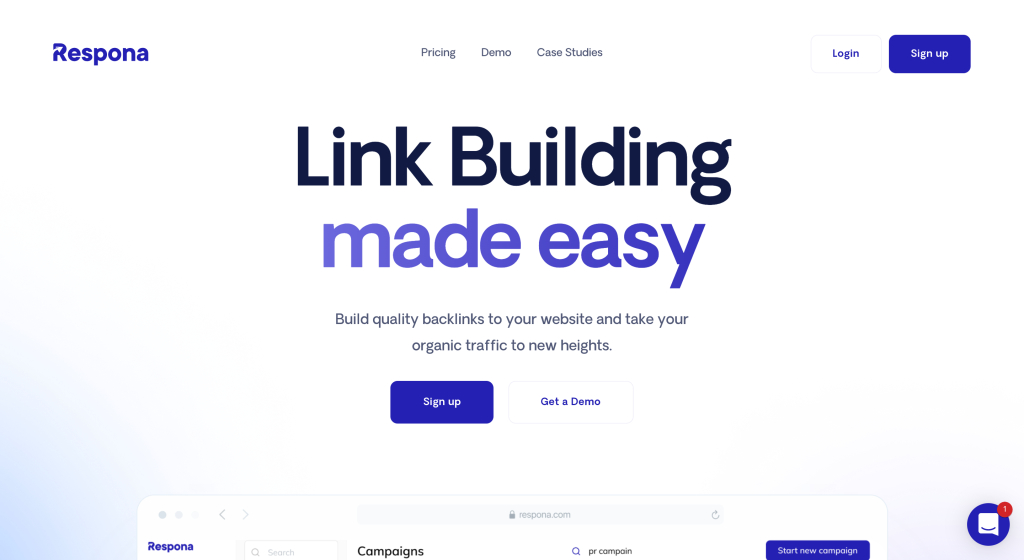
Respona is an all-in-one blogger outreach platform outfitted with all of the necessary tools to set up and launch an email campaign of any kind, be it for link building, digital PR, marketing, or even sales.
Google Analytics
Use Google Analytics to measure referral and organic search traffic to your website, as well as conversions for leads and sales.
Google Search Console

To measure digital marketing KPIs such as clicks, impressions, position rankings, and brand name searches, Google Search Console is the way to go.
Google Reverse Image Search
To identify where your visual content such as images and infographics appear online, consider using Google Reverse Image Search.
Ahrefs
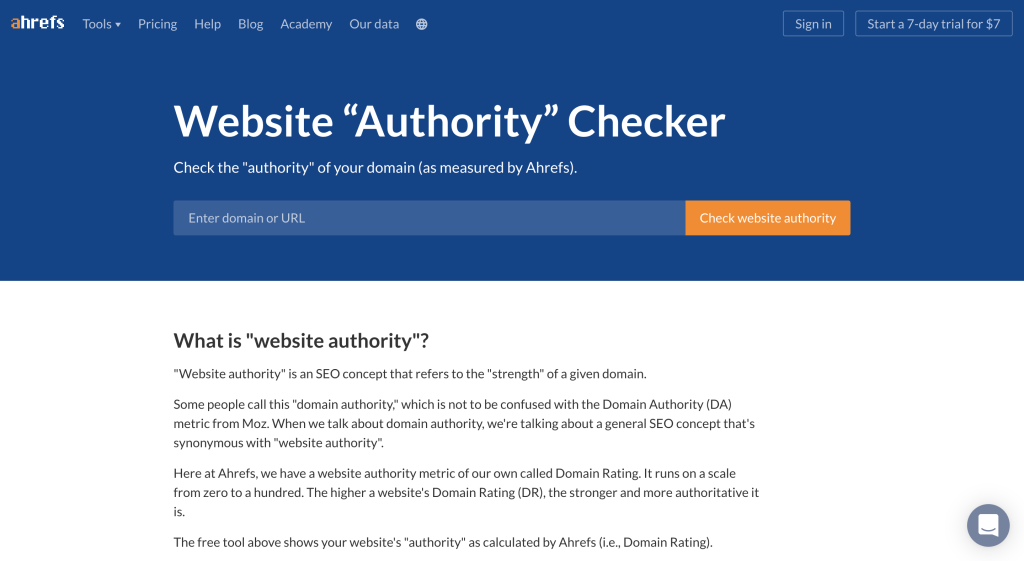
Utilize Ahrefs to determine Domain Authority, analyze backlinks, and find unlinked mentions.
Moz
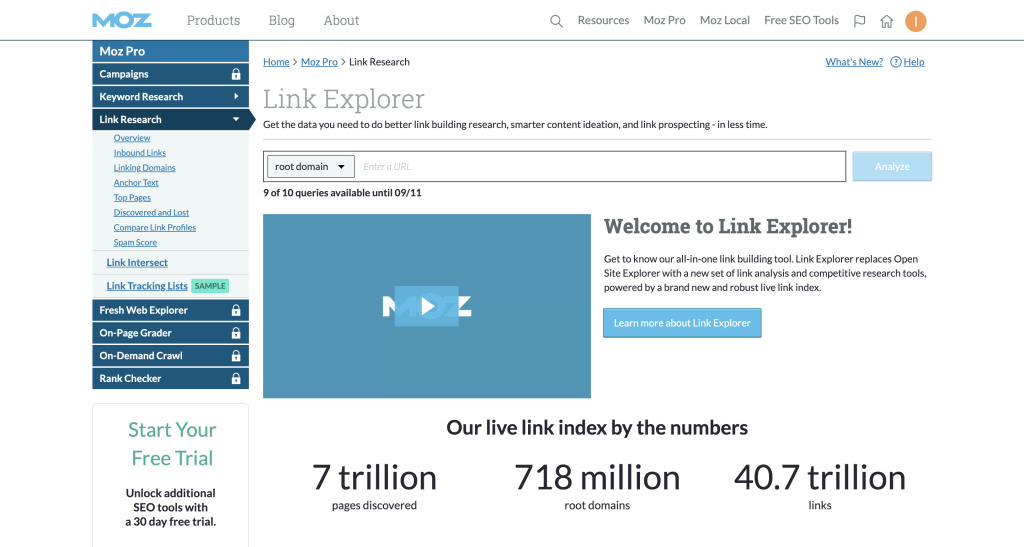
Take advantage of Moz to determine Domain Rating, perform site audits, and do keyword research.
Determ
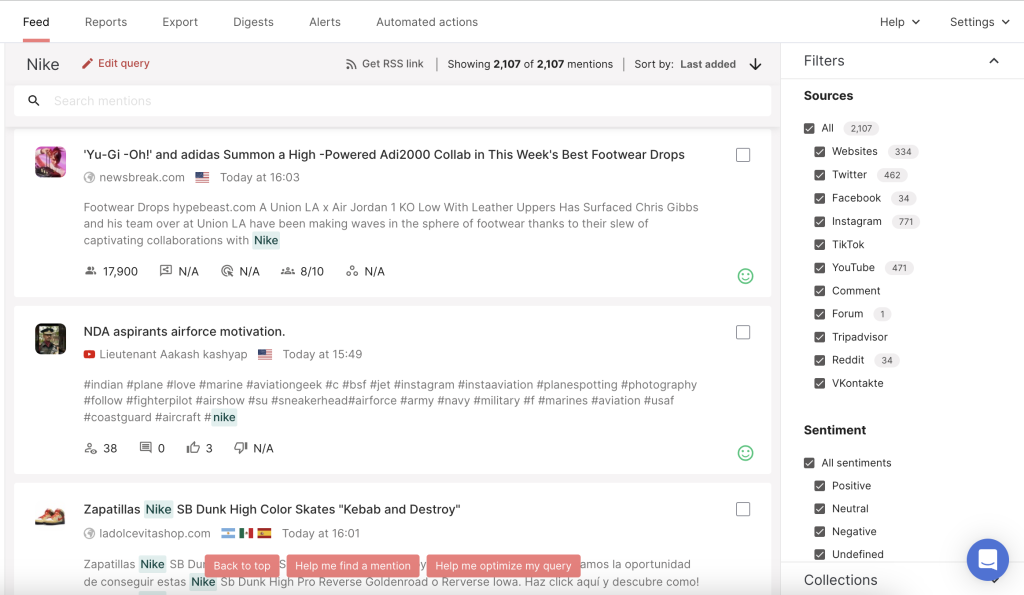
Implement Determ to track brand mentions and impressions, engagement and sentiment data, find influencers, get virality alerts, and more.
? Suggested read:
Are you using social listening tools to find influencers? Because you should.
HARO

If you’re looking for a great service to provide journalists with information and secure media coverage, HARO should be your go-to. Pro tip: use it for finding sources you’ll feature in your content, and in return, they will promote it.
Whatagraph
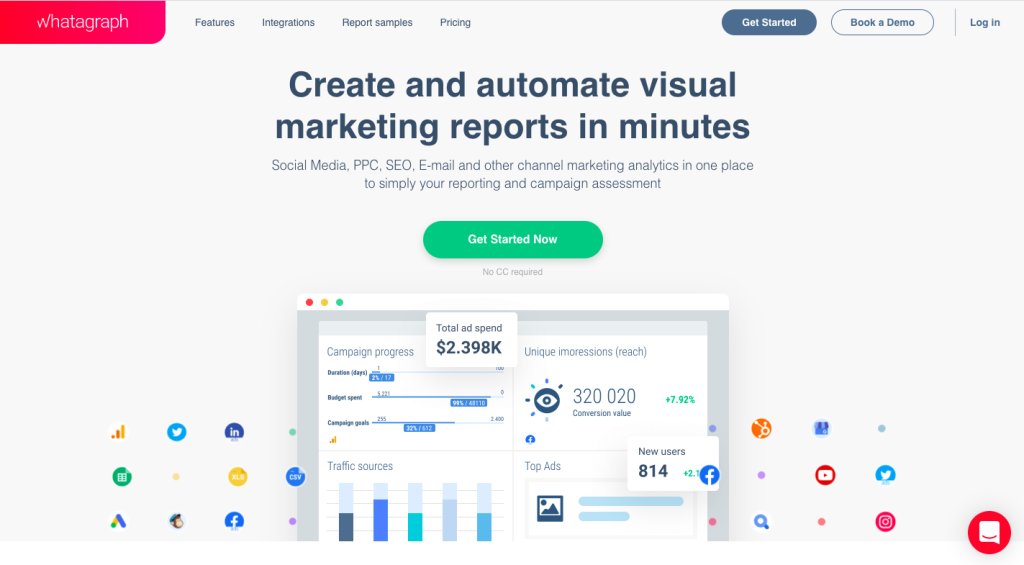
Use Whatagraph for your multi-account, cross-channel marketing performance reporting. The tool simplifies reporting and analytics tasks while automating data visualization.
SocialPlanner
SocialPlanner is an all-in-one content marketing & social media scheduling tool designed to help brands and businesses find, plan and publish engaging content.
If you have several people working on your Digital PR, you might also want to consider choosing the best employee engagement software.
Experts’ Best tips on Becoming a Successful Digital PR Manager
If you’ve come to this point of the blog, you’ve probably realized there is so much more to the position of a digital PR manager than people might think. The digitalization of the industry set the bar much higher in regards to the skills and knowledge needed to effectively do the job nowadays, on top of the usual.
But, fret not, we’ve got you covered on that too.
To help you kickstart your career in digital PR, we reached out to three established digital PR professionals. Here’s their advice on how to become a successful digital PR manager.
Demonstrate authority in your digital space
The key to being a great PR manager in 2020 is to think more broadly than media relations. With one-quarter of newspapers in the United States closing down in the past 15 years alone, you can’t count on reaching all your goals through media coverage.
You have to become knowledgeable in leveraging online review sites, your branded Google presence and other trust signals to demonstrate authority in your space.
Scott Baradell, founder and CEO of Idea Grove
Optimize for maximum click-through
Digital PR is as much an SEO play as it is a traditional PR play. Understanding this is key to becoming a successful Digital PR manager or professional today.
For most businesses or organizations, people will find your press release or featured article, if it gets picked up by a journalistic professional (eg. editor, blogger, etc.) at a media outlet, through browsing the media outlet’s website, social media, or search engines.
Even with the former two methods, while you are not necessarily optimizing just for search keywords, you (and the editors writing for these online media outlets) are optimizing for maximum click-through via the headline. This is why oftentimes on popular media outlets, you would see clickbaity headlines with keywords strategically inserted.
With the latter method, having your press release properly optimized for search engines with keywords is important because if your headline contains a match for the keyword the audience searches for, it would be more likely to show up in the SERP (search engine results page) for that query and the user is more likely to click into your press release or featured article if it appears to serve their search intent.
Ryan Huang, CEO of PR Distribution
Leverage social media, niche-influencers, and podcasts
A strong digital PR campaign that includes SEO content and influencer strategy, plus the effective engagement of customers via social media, enables businesses to share their story with a wider audience; to target specific customers with niche content; to drive traffic to their sites/brands online – generating revenue and new customers… All for a fraction of the cost of paid or traditional PR campaigns.
Digital PR enables brands to be highly targeted in reaching audiences and customers.. as sites, influencers, and communities are increasingly segmented by topic, lifestyle, and other special/unique interests. Further, niche-driven influencers are seen as (90+%) more credible and believable than others on social media, so building these relationships alongside a content strategy to create blog posts, infographics, videos and other unique content for niche channels and sites is a must.
The same applies to the burgeoning podcast category, which – having gained listeners due to COVID challenges – is now an even more impactful platform for brands to demonstrate industry knowledge and expertise while reaching target/desired audiences. Podcasts, along with blog content, are a fast track way to establish authority as a thought leader within an industry.
Sedef Onder, founder, managing partner, and strategist of Clear Inc.
To Sum it All Up
And there you have it, folks. We’ve covered it all: Digital PR basics, strategies, tools, metrics, and even expert advice to give you an edge over the competition.
If you enjoyed reading this article and learned something new today, let us know. Also, feel free to send it to your friends and colleagues – sharing is caring!
Grow your business with the help of media intelligence. Book a call with our experts and try out Determ for free.
